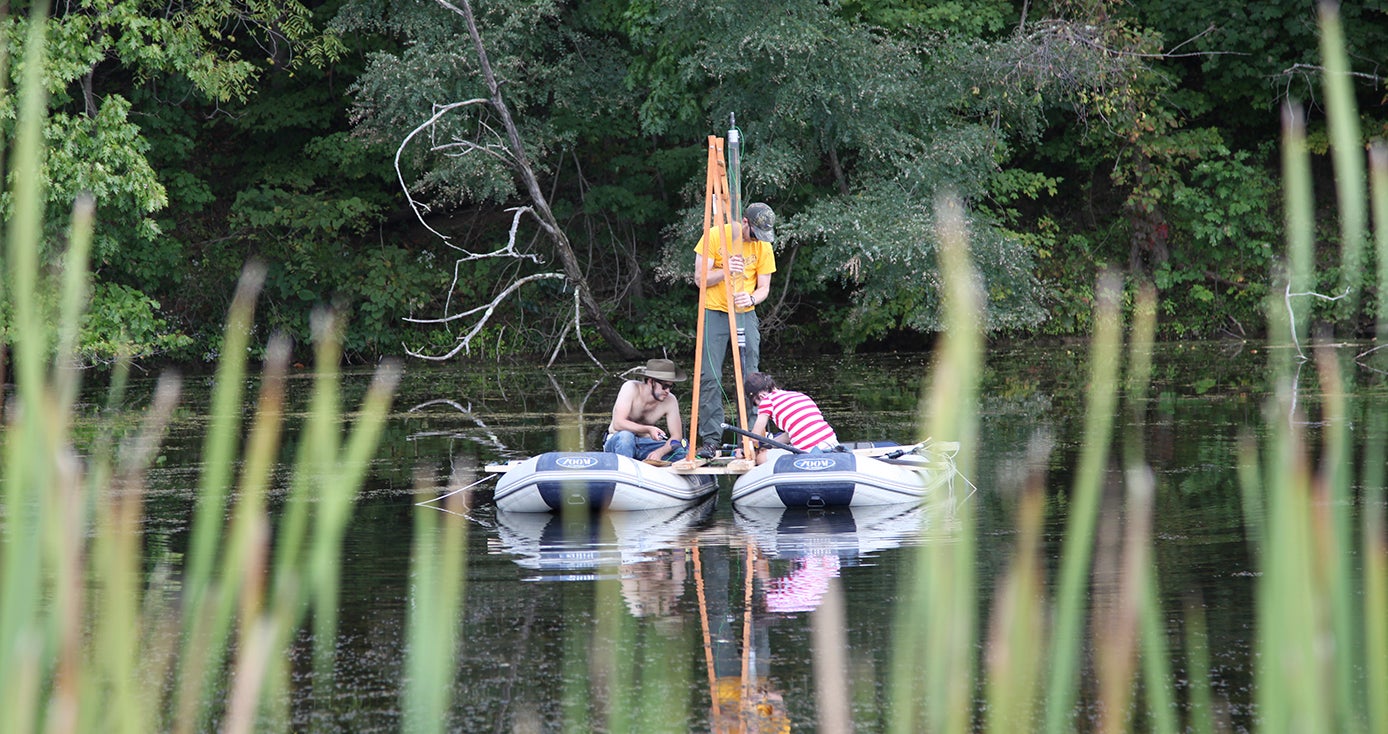
Subscribe to Pittwire Today
Get the most interesting and important stories from the University of Pittsburgh.Geologists Uncover Lasting Effects of Historical Industries in Southwestern Pennsylvania
Growing concerns over climate change may lead some to curb their carbon footprints, but research from the University of Pittsburgh suggests that environmental damage done long ago also contributes to modern-day climate concerns.
Researchers in the Department of Geology and Environmental Science tracked historical accumulations of zinc, arsenic, cadmium, lead and other potentially dangerous metals in the sediments of a lake south of Pittsburgh. They then compared that data to historical events, legislative changes and other chemical data to see how metal levels changed over time.
What they found, explained lead author Robert Rossi (A&S ’16G), is that the ancestral trace bits of metal are in fact mobile. Severe weather events brought on by climate change today can increase bank erosion rates and churn up the sediments — thus reintroducing chemical waste from industries long since gone. Their paper appeared in Environmental Science and Technology earlier this year.
The presence of these trace metals in soils, streams or rivers could pose unknown consequences for ecosystems and human health, Rossi said.
“Just because we make strides in ending emissions from one source doesn’t necessarily mean that we’re out of the woods,” Rossi said.
The effects of legislative measures to curb pollution can be seen in the sediment record, he said. Trace metal loadings dropped with the 1990 amendments to the Clean Air Act, which curtailed atmospheric emissions of certain officially recognized environmental toxins.
This summer, the U.S. Army Corps of Engineers projected increased precipitation events, flooding and other climate changes to the Ohio River Basin within the next 80 years — changes that would disrupt the sediments of aquatic ecosystems and threaten to redistribute legacy contaminants to neighboring communities.
“If the landscape is wrecked, it’s harder to transition to agriculture, or forestry or tourism,” added Daniel Bain, Pitt assistant professor of geology and environmental science and co-author on the study. “It’s really hard to be living in a place where there aren’t any jobs.”
Though cleaning up legacy pollution is no easy task, “the more information we have, the better,” said Rossi. “We can do risk management scenarios and figure out the best way to move forward with a plan.”
Beyond being harmful to human and environmental health, large-scale legacy contamination of trace metals has the potential to impact industries that haven’t been developed yet, said Rossi.
“It’s a good idea to have a handle on the sequence of these things, understanding that the actions of today can impact things for a while longer than we thought they could,” he said.




